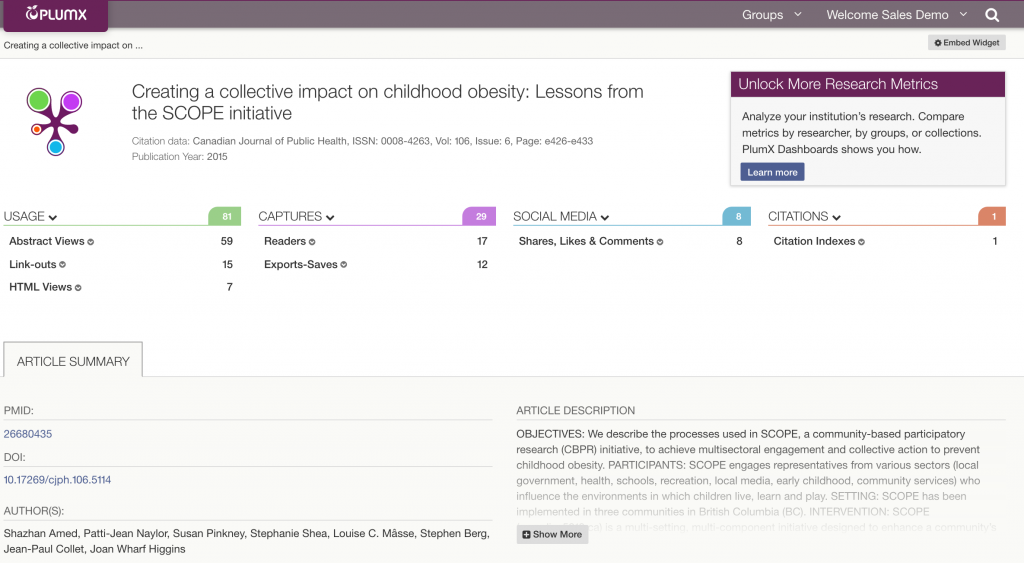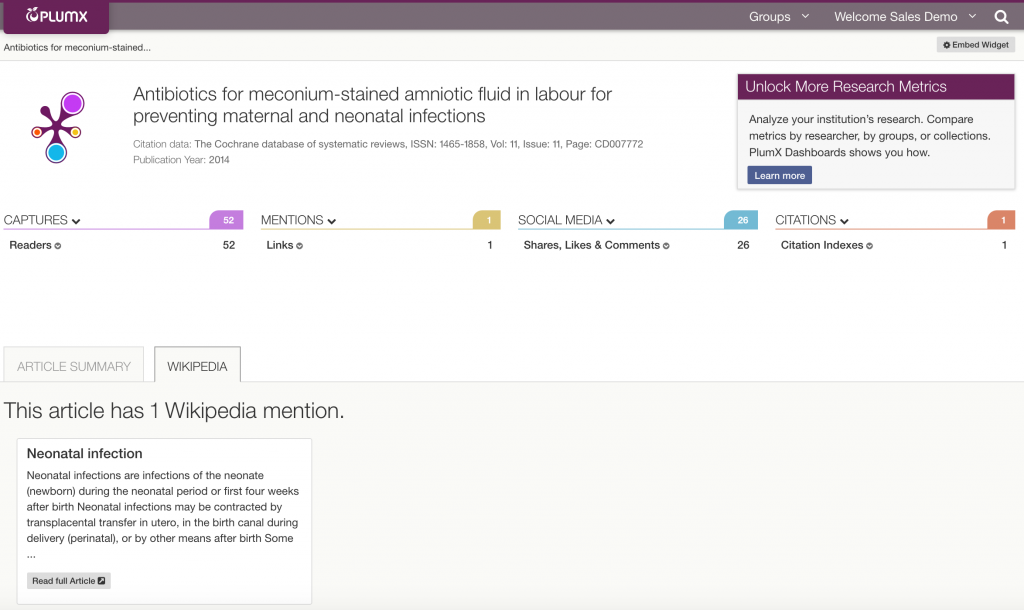See the Plum Print Altmetrics in EDS — In More than Just Articles
On June 23rd we announced that we were adding altmetrics via the PlumTM Print to EBSCO Discovery ServiceTM (EDS). I am pleased to say that this is complete and the Plum Print is now visible in the result list and on the detail page. This is a nice advantage for EDS users.
We’re enjoying the positive feedback on this new feature. Read more details about it in this blog post.
Let’s explore the significance of this by walking through some examples:
Example 1: Books
Here are the results from an EDS search for “childhood obesity.” You can see that the first two results are books and both have altmetrics showing via the Plum Print.
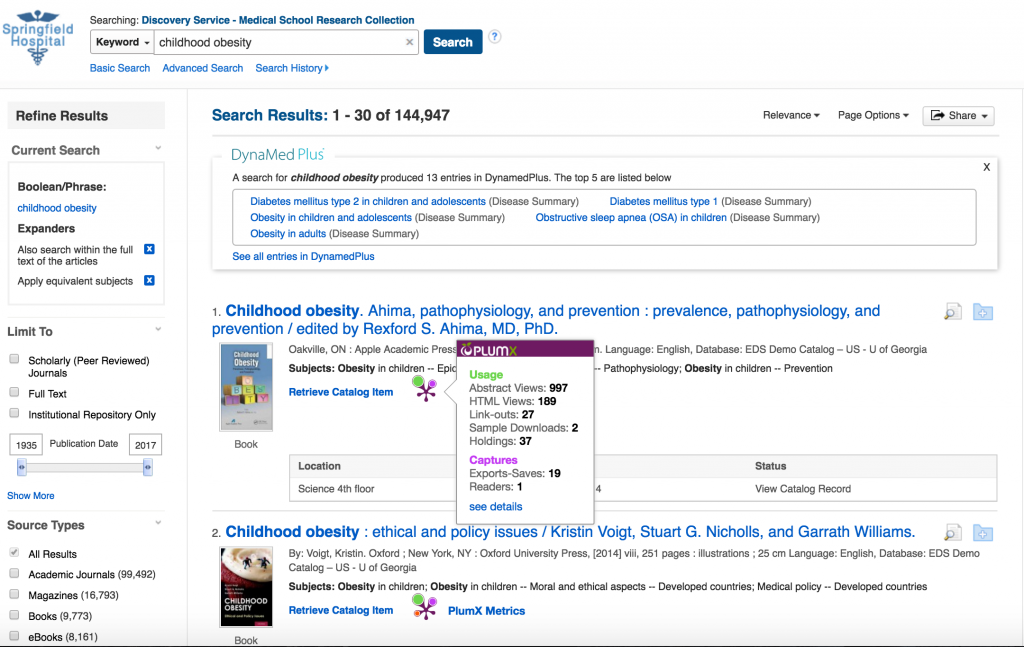
Clicking on the “see details” link provides more information about the books. Below are the details for the first book in the result list, “Childhood Obesity.” Guess what? While this book does not have citations (they rarely do) and has not been a ‘hit’ on social media, you can still see that it is garnering attention and has even been reviewed on Goodreads. This is not what people expect to see from books. This is an important conversation that has otherwise flown under the radar.
Example 2: Articles
Reviewing that same EDS search and limiting it to journal articles reveals that 28 out of the top 30 articles presented have Plum Prints.
Below is an example from the result page. A quick perusal of this list lets you know that some articles have social media hits. While others may not have any social media, they have metrics from other categories such as Usage and Captures. All of these metrics are valuable depending upon your research goals. This is what is needed from altmetrics: they must deliver a comprehensive review of the five categories of metrics, each revealing their own lens – or story – of the research. The breakdown of interest reveals more about the ‘how’ and the ‘why’ of the research.
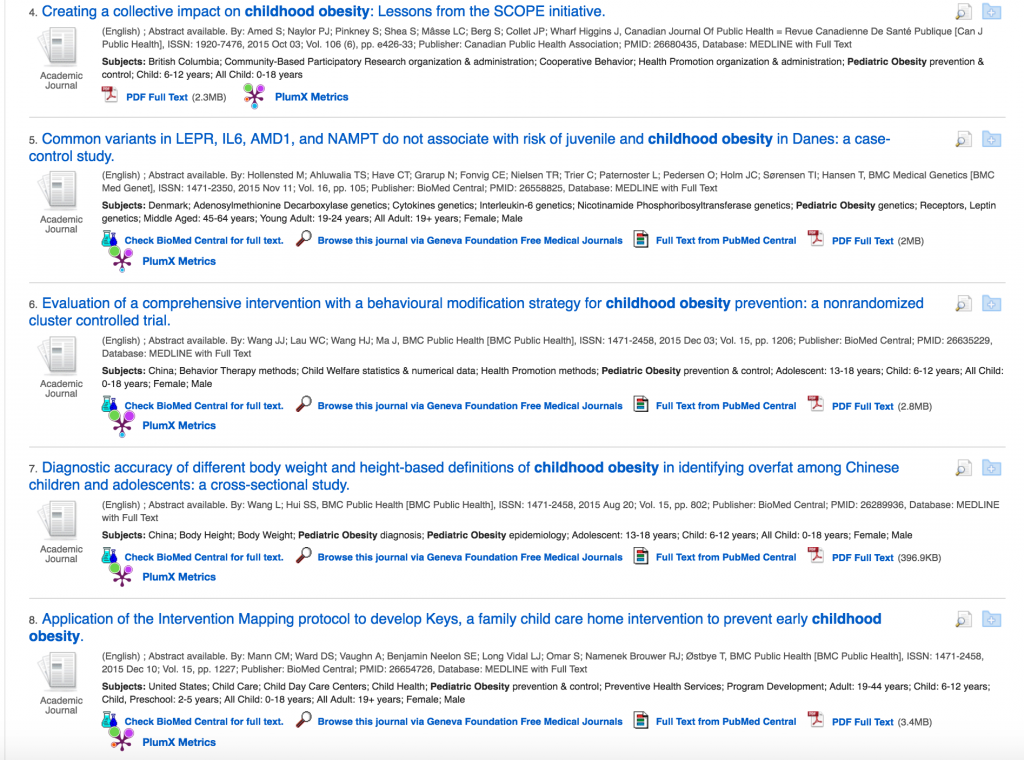
If you pick the first article on this list, “Creating a collective impact on childhood obesity: Lessons from the SCOPE initiative” you can see that it has been shared on Facebook and has a single cited-by count. Multiple metrics help show the picture behind the interest in this research.
Example 3: Reviews
Plum Print altmetrics are available for more than articles and books. In this search of Chorioamnionitis I limited it to Reviews. You can see Plum Prints on the majority of the results. If you scan the list, you can quickly see that result #19, “Antibiotics for meconium-stained amniotic fluid in labour for preventing maternal and neonatal infections” has the largest amount of Social Media. This is the beauty of this visualization; it gives you quick insight. If you base your interest in research upon what is capturing the attention of the public, this is valuable information.
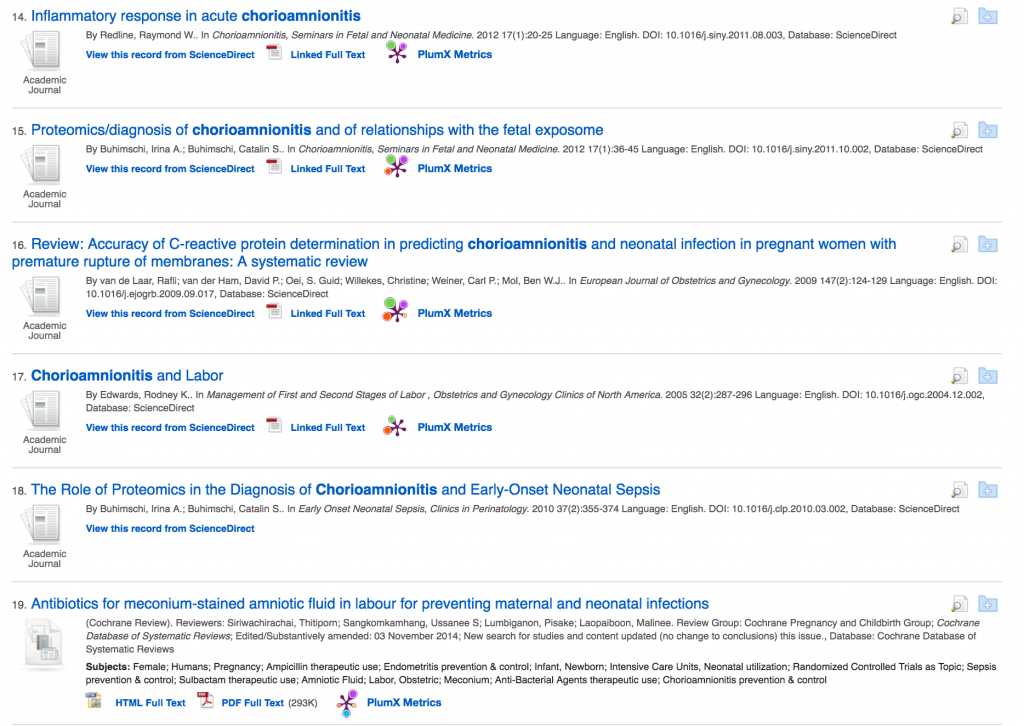
You also notice that this research artifact has metrics in the Mentions category. By clicking over to PlumX you can see that this article was mentioned in a Wikipedia article, Neonatal Infection. Wikipedia mentions hold some currency. This might inform researchers that this article has more than an average interest and use on this topic.
Want to learn more? Think about your own needs and potential uses. I encourage you to search EDS and discover your own uses of the Plum Print.
Let us know what you discover. You can tweet to @plumanalytics or email us at team@plumanalytics.com.

